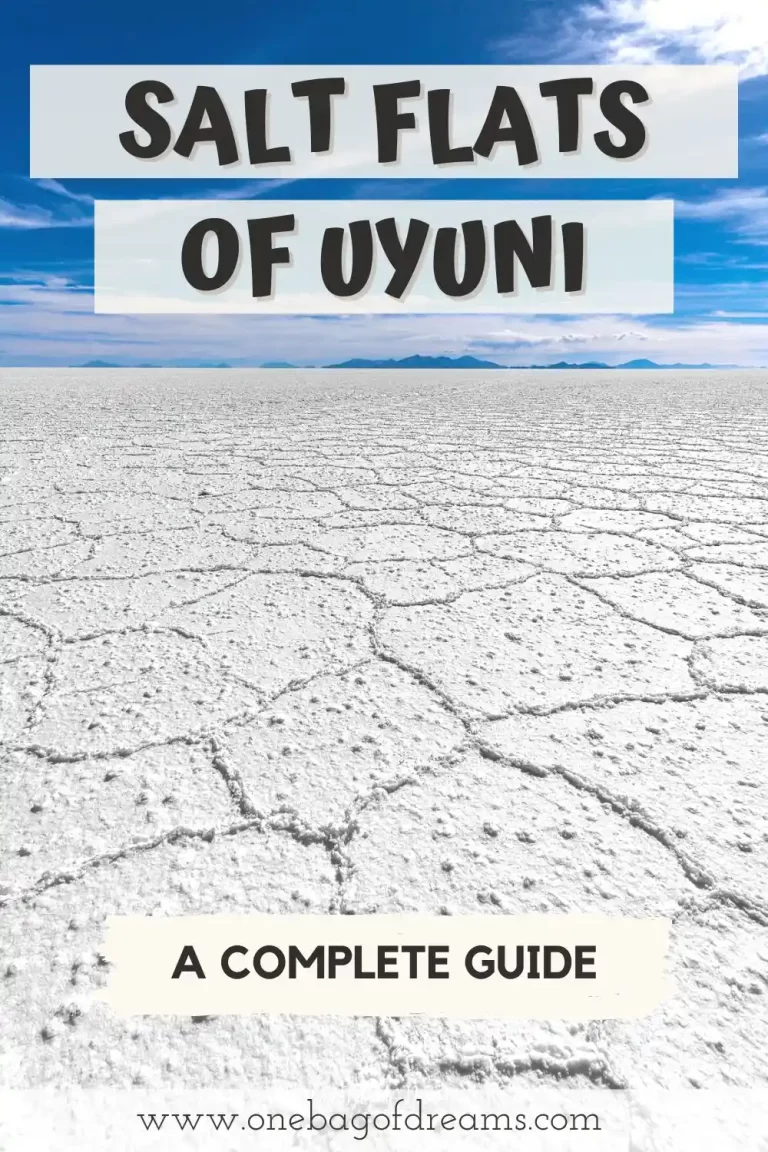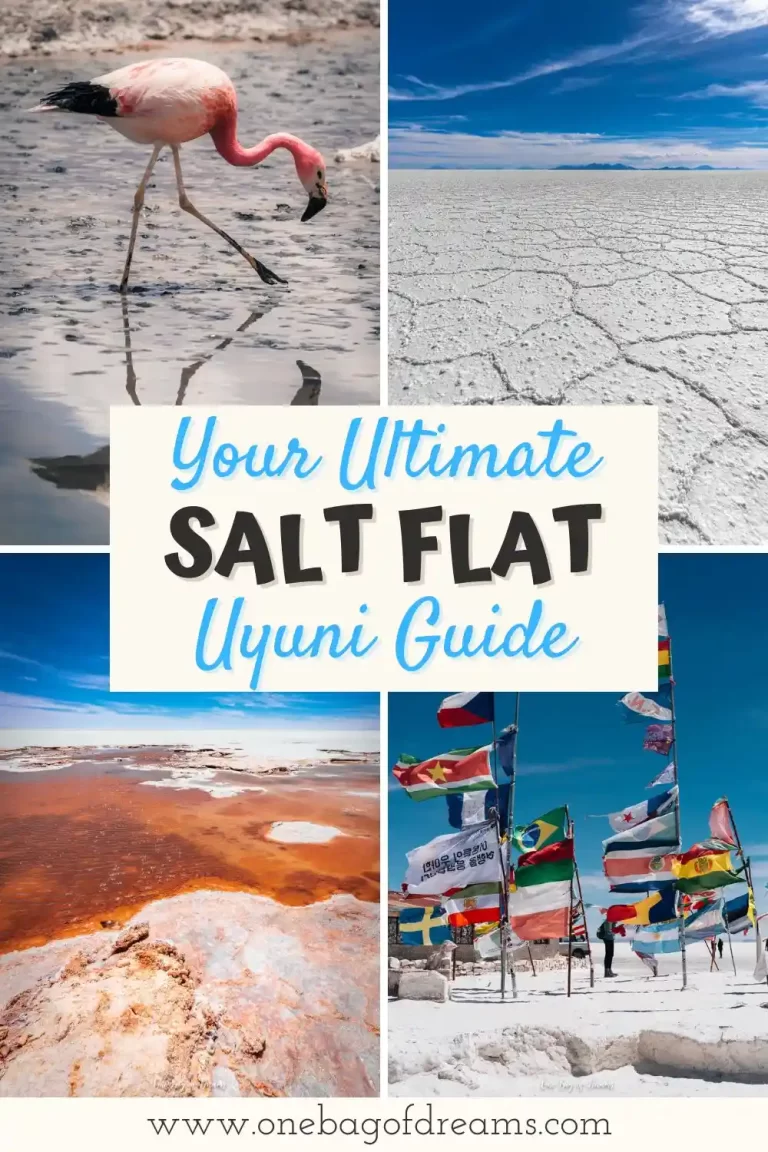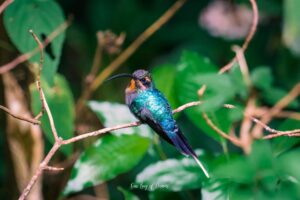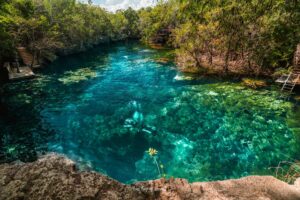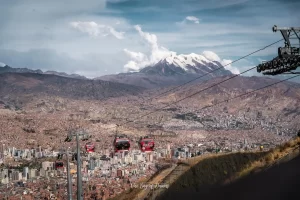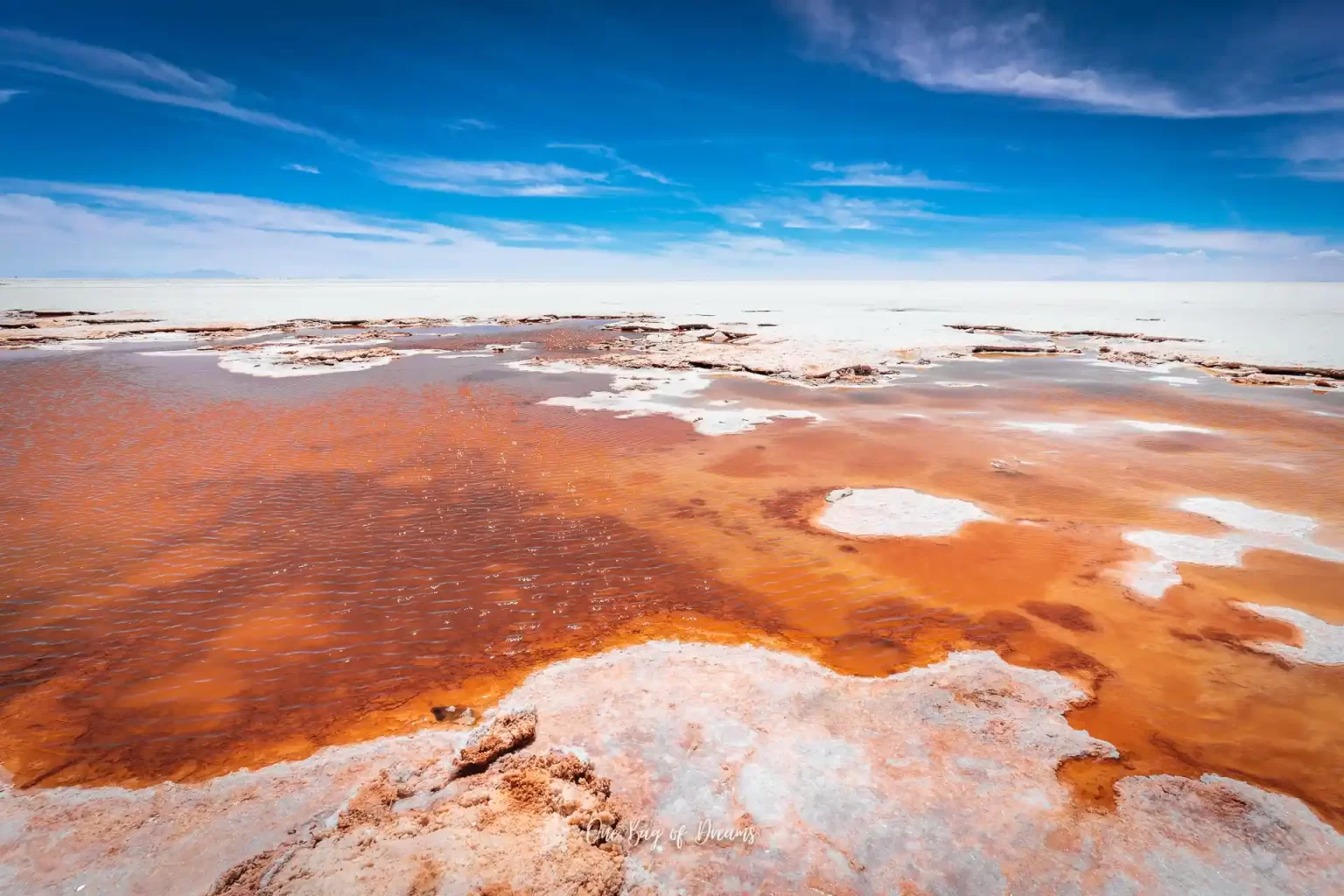
A Complete Guide to Visiting the Stunning Salt Flats of Uyuni
Bolivia’s Uyuni Salt Flats are one of the most breathtaking and unique destinations on the planet. Known for its vast expanse of white salt plains, the Uyuni Salt Flats offer an otherworldly experience that cannot be found anywhere else in the world. For travel enthusiasts, visiting Uyuni Salt Flats is an adventure of a lifetime, and it’s essential to make the most of your visit to this incredible destination. In this blog, you will be provided with a complete guide to visiting the stunning Salt Flats of Uyuni.
Contents
About the Uyuni Salt Flats
The Uyuni Salt Flats, also known as Salar de Uyuni, are the largest salt flats in the world, covering over 10,000 square kilometres. The salt flats, which are located in southwestern Bolivia, were formed as a result of a prehistoric lake that dried up, leaving behind a vast expanse of salt and minerals. With an elevation of around 3,600 meters above sea level, the salt flats offer an expansive and entirely flat terrain that extends as far as the eye can see. This unique topography makes it a popular destination for speed racing, including the annual Dakar Rally.
The salt crust consists of 11 layers, each of them being between 2 to 10 meters thick, and is believed to be 120 meters thick in some places. During the rainy season, the water on this flat surface creates a mirror-like effect, making it a popular destination for photographers and nature enthusiasts. In addition to its unique landscape, the Uyuni Salt Flats also offer a diverse range of flora and fauna, including pink flamingos, llamas, and cacti. It’s no wonder that the Salt Flats of Uyuni have become a bucket-list destination for travellers from all over the world, providing an otherworldly experience that cannot be found anywhere else on Earth.
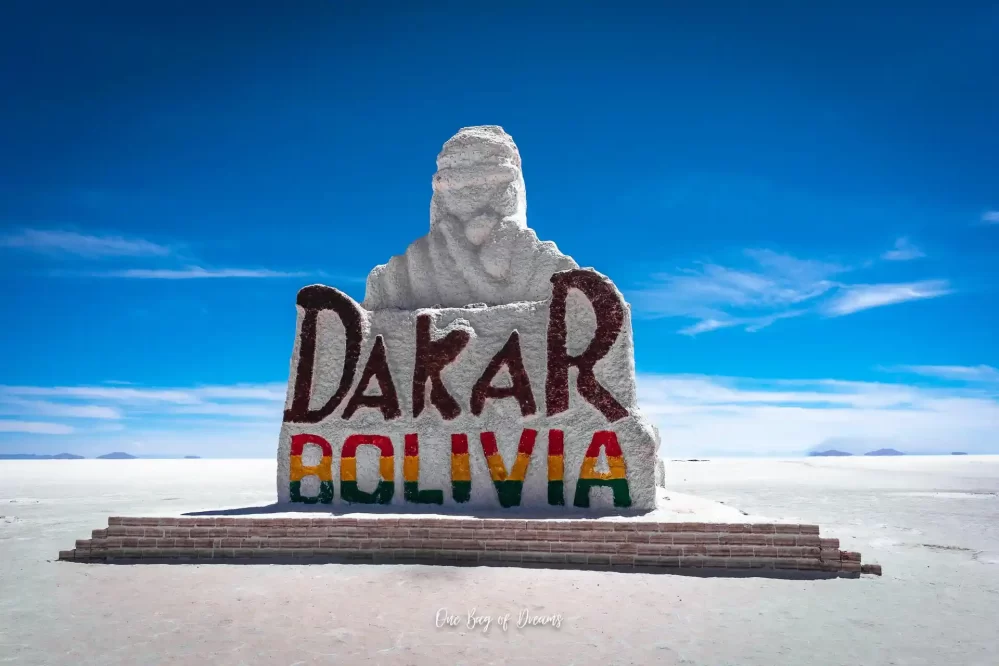
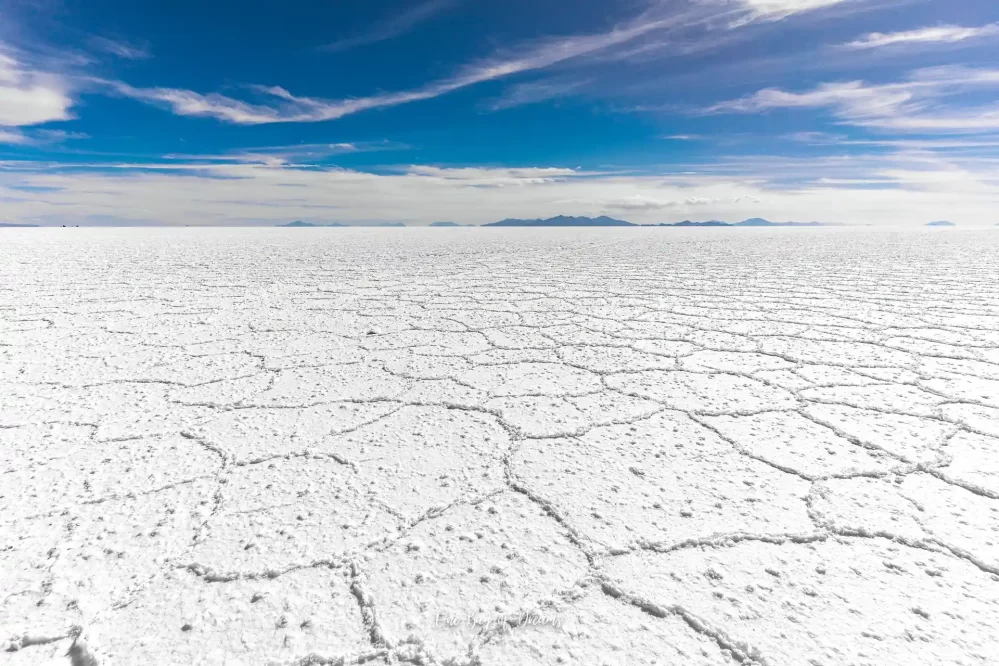
How to get to the Salar de Uyuni
One of the most common and my preferred way to get to Uyuni is by taking a bus from La Paz, Bolivia’s capital city. Although the journey takes around 10-12 hours, the bus ride is surprisingly comfortable. The buses are well-equipped with comfortable seats, blankets, and some offer even hot meals, making the journey more enjoyable. However, it is worth mentioning that the unpaved roads and high altitude can make the ride bumpy at times.
It’s worth noting that there is also a bus connection from Sucre, another popular city in Bolivia, to Uyuni. The journey takes around eight hours and is another comfortable and affordable way to reach Uyuni. Additionally, the road from Sucre to Uyuni offers some spectacular views of the Andes Mountains and the surrounding landscape. However, most connections will operate during the night and therefore you will probably be asleep. Some travellers even choose to break up the journey by stopping in Potosi, a historic mining town located halfway between Sucre and Uyuni.
Alternatively, you can take a flight from La Paz to Uyuni, which takes around an hour, or a train from Oruro, which takes approximately seven hours. No matter which routes and type of transportation you take, arriving in Uyuni is just the beginning of an incredible adventure in Bolivia’s otherworldly Salt Flats.
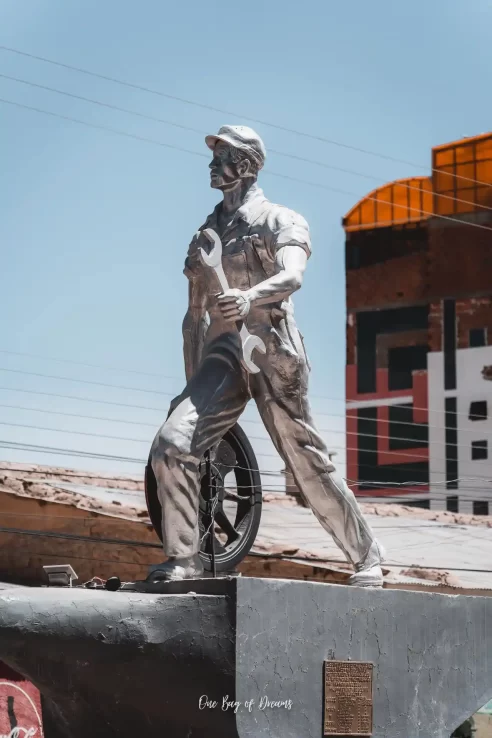
When to visit the Saltflats in Uyuni
The best time to visit the Salt Flats of Uyuni is during the dry season, which runs from May to November. During this time, the weather is dry and sunny, with clear blue skies that provide a stunning backdrop for photos. The salt crust on the flats is also at its most stable and firm, making it easier to walk on and explore. However, keep in mind that temperatures can drop significantly at night, so it’s essential to pack warm clothing. The rainy season, which runs from December to April, can also be a beautiful time to visit the Salt Flats. The rainwater creates a mirror-like effect on the salt flats, creating a unique photographic opportunity. However, the wet conditions can also make it challenging to explore the area, and some parts of the Salt Flats may be inaccessible due to flooding. Ultimately, the best time to visit the Salt Flats of Uyuni will depend on your preferences and travel plans.
Where to Start your Tour to the Salt Flats of Uyuni
If you’re planning a trip to the Salt Flats of Uyuni, you may be wondering about the different tour options available. Three popular starting points for tours are the towns of Uyuni, Tupiza and San Pedro de Atacama. Each town offers different routes and tour lengths, and choosing the right option can greatly impact your experience. In this chapter, we’ll take a closer look at the different tour options departing from Uyuni and Tupiza, including their pros and cons, to help you make an informed decision.
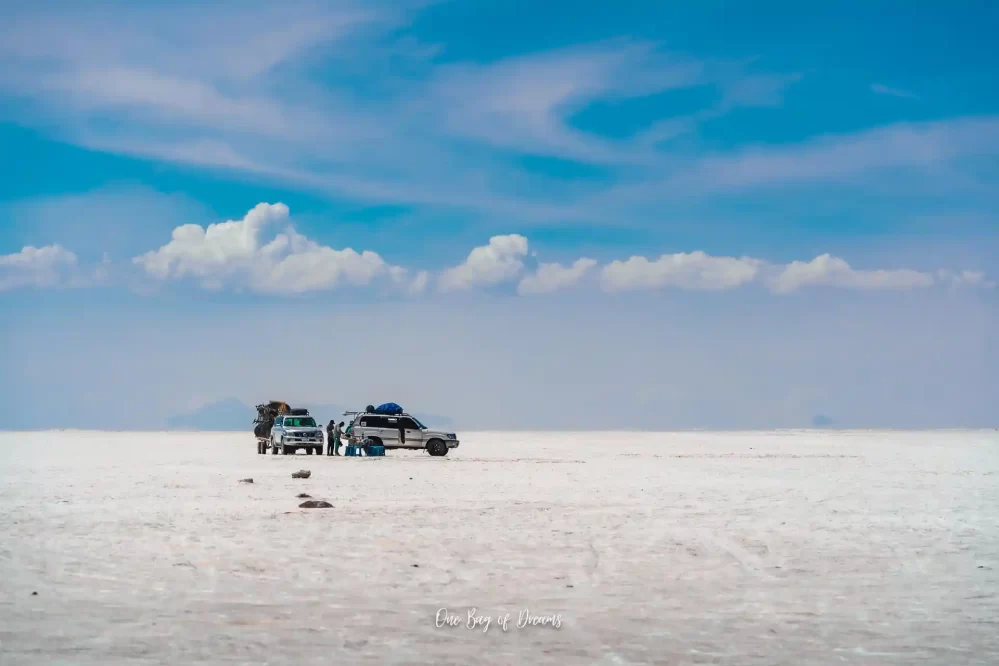
Starting from Uyuni and Returning to Uyuni
This tour option is the most popular and for good reason. It typically lasts between two to three days, and it includes visits to the salt flats, the Train Cemetery, Colchani, and nearby lagoons and hot springs. One of the biggest advantages of this tour is its accessibility, as Uyuni is a well-connected hub for tourists. Additionally, this tour is often the most cost-effective option, making it a great choice for budget-conscious travellers. However, one of the downsides of this tour is the crowds of tourists. During peak season, it can be challenging to avoid crowds and fully appreciate the beauty of the salt flats. Additionally, the itinerary is often pre-set and rigid, so there’s limited flexibility in terms of what you can see and do.
Starting from Uyuni and Going to San Pedro de Atacama
This tour is a great option for travellers looking to experience different landscapes and cultures. It typically lasts three to four days and includes visits to the salt flats, the Eduardo Avaroa National Reserve, geysers, colourful lakes, and more. One of the biggest pros of this tour is the chance to cross the border between Bolivia and Chile, which can be a memorable experience for many travellers. Additionally, the landscapes are diverse and breathtaking, making it a great option for photographers and nature enthusiasts. However, the cost of this tour is often higher than other options, and you may need additional paperwork and visas to cross the border. The longer travel time can also be a drawback, especially if you’re short on time.
Starting from Tupiza and Going to Uyuni
This tour is a less-travelled option that starts in Tupiza, a town located south of Uyuni. It typically lasts between three to four days, and it includes visits to the Quebrada de Palala Canyon, the salt flats, and nearby lagoons and hot springs. One of the biggest advantages of this tour is the chance to explore different landscapes and experience fewer crowds. Additionally, the itinerary is often more flexible, giving you the freedom to see and do what you want. However, the downside of this tour is the higher cost, as Tupiza is less accessible than Uyuni. Additionally, the longer travel time to reach Tupiza can be a drawback for those short on time.
Ultimately, the best tour option will depend on your travel plans, budget, and preferences. It’s important to choose a reputable tour operator to ensure you have a safe and enjoyable experience. Regardless of which tour option you choose, exploring the Salt Flats of Uyuni is sure to be a highlight of your trip to Bolivia.
Tour Options to the Salt Flats of Uyuni
There are various tour options available for exploring the Salt Flats of Uyuni, ranging from one day to four days, with different routes and destinations. The most common options are listed below.
1-Day Tours
One-day tours to the salt flats are typically not recommendable as you will miss out on many fantastic places to visit in this area and the whole tour will feel very rushed. A One-day tour typically includes a visit to the salt flats, a stop at the Train Cemetery, and a visit to the nearby town of Colchani. These tours are ideal if you’re short on time but still want to experience the magic of the Salt Flats. However, if you can, definitely choose one of the tours listed below.
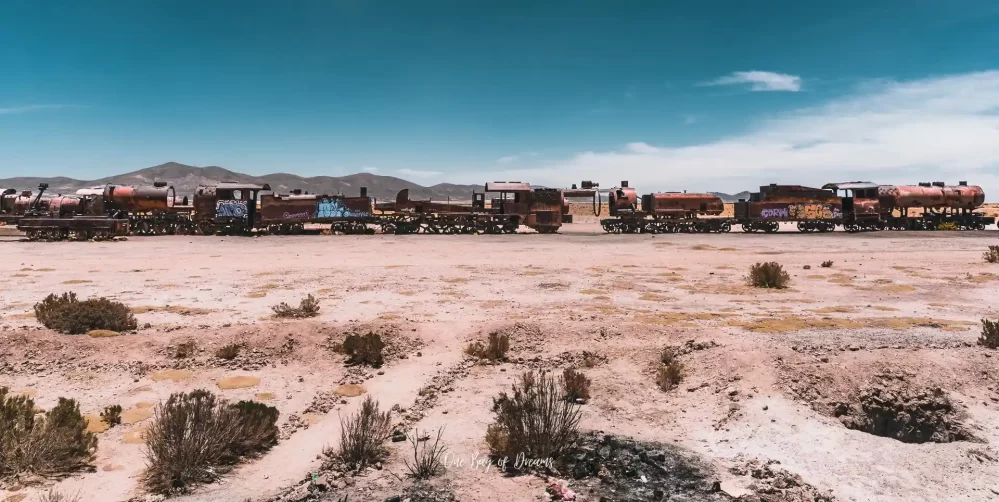
2-Day Tours
A better option to soak in more of the salt flats in Uyuni is a two-day tour typically including visits to the salt flats, nearby lagoons, and hot springs, as well as an overnight stay in a salt hotel. These tours offer more time to explore the surrounding areas and experience the unique culture and nature of the region. Also, the stay in a Salt Hotel is something very unique that you will never forget.
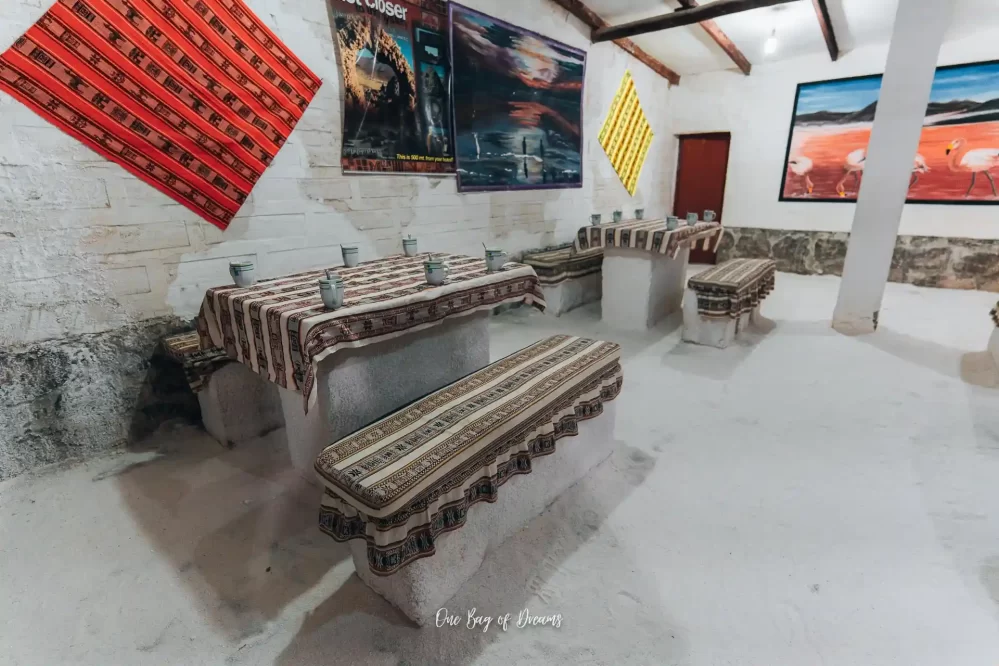
3-Day or 4-Day Tours
The absolutely best option, in my opinion, is a three- to four-day tour, that typically includes all of the stops mentioned above. However, you will venture even deeper into the vast deserted landscape that surrounds the salt flats of Uyuni. These tours also include visits to remote areas of the Eduardo Avaroa National Reserve, where you can see geysers, colourful lakes, and even flamingos. Also, don’t miss the chance to swim in the hot springs at night and get mesmerized by the beautiful stars above.
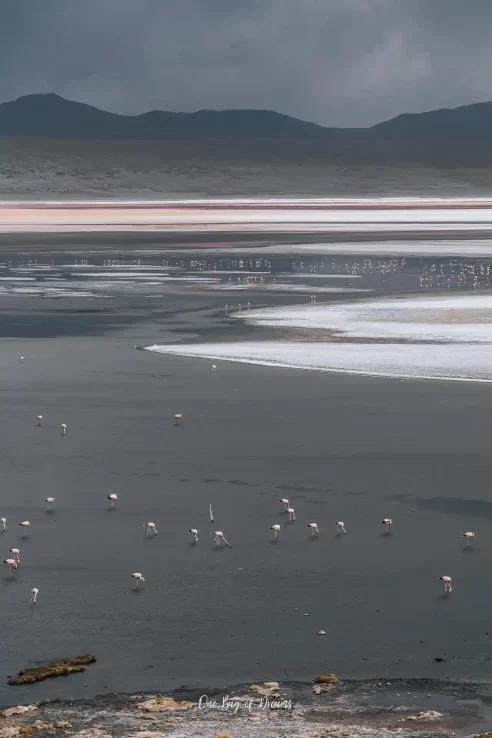
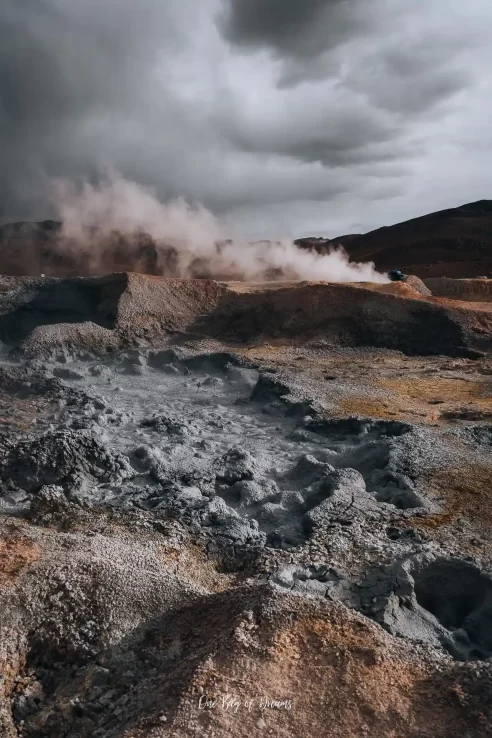
How to Choose a Tour to the Salar de Uyuni
Once you arrive in Uyuni, there are several tour companies that offer tours to the Salt Flats of Uyuni, which is the most popular and at the same time the most recommendable way to explore the area.
Obviously, you can arrange your tour in advance online through a well-known tour operator. Two tour operators that have a very good reputation are Salty Desert Aventours as well as Andes Salt Expeditions. You can’t go wrong with either of those two tour operators. However, if you are travelling on a budget, the cheapest option will be to book the tour on your day of arrival in Uyuni.

Top Tip: The best way to get a great deal on one of the tours, is to arrive early in the morning in Uyuni and get one of the last-minute deals for the same day. The tour operators are trying to fill up the cars for the tour and therefore you have good leverage to bargain and lower the price of the tour.
When you arrive in Uyuni with the night bus in the early morning head towards Plaza Principal Aniceto Arce. You will find the tour operators in the Avenida Ferroviaria. Head there around 7 a.m. and book yourself on a tour. The tours usually depart at 10 a.m. Therefore you have plenty of time to find a tour operator.
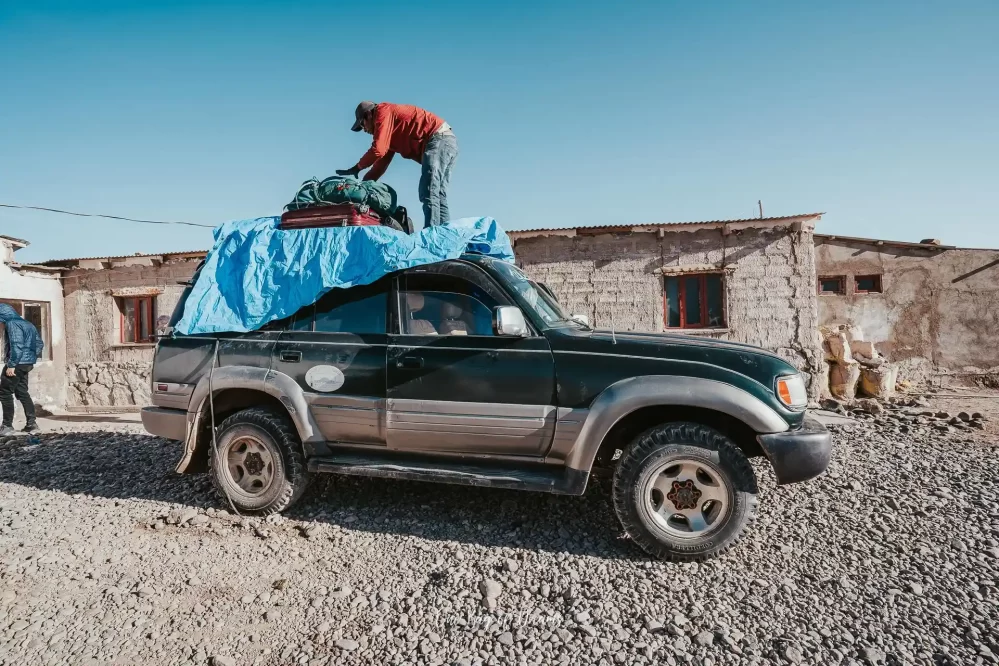
Typical Tour from Uyuni - What to Expect
Day 1
The first day of your tour to the Saltflats in Uyuni starts early in the morning with your arrival in Uyuni at 5 a.m. most probably by night bus. After settling in, the first order of business is breakfast and a refreshing shower at a breakfast place that is open so early in the morning. But don’t worry it is not hard to find one. Once you’re ready to go, head to Avenida Ferroviaria to scout for free spaces on the tours. I got lucky with Uyuni Andeantravel. By 9 a.m., you should have your supplies like water and toilet paper bought from the market nearby and your bags packed. If you return to Uyuni at the end of your tour, you can leave most of your stuff at the tour agency. At 10 a.m., the tour officially begins, and your backpacks are loaded on top of the 4×4.
The first stop of the tour is the train cemetery at 11 a.m., a unique place where abandoned trains from the early 20th century are left to rust in the desert. This location is a popular spot for photographers and history buffs alike, as it offers a glimpse into Bolivia’s railway history. The trains were used to transport minerals from the highlands to the coast, but after the industry declined, the trains were left behind.
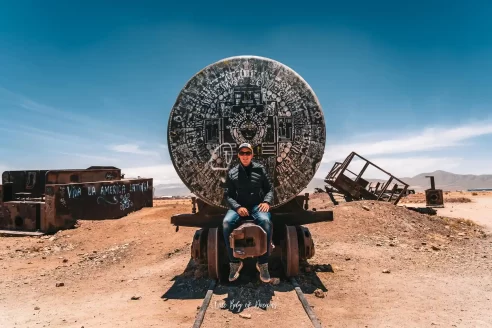
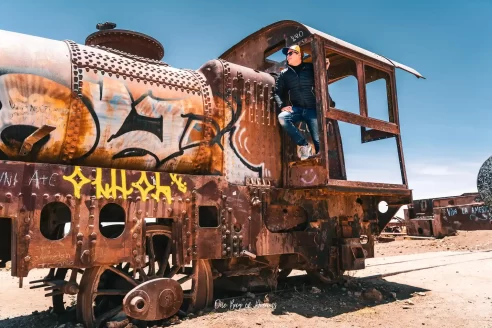
The tour then continues to Colchani, a small village located on the edge of the salt flats, where you can visit a salt factory at 12 p.m. The salt flats are an important source of income for the locals, and you can learn about the salt extraction process and see how the salt is processed and packaged.
After lunch, you’ll head to the Dakar Monument and the Plaza de las Banderas. The Dakar Monument is a tribute to the famous Dakar Rally, an off-road endurance race that passed through Bolivia in 2016. The Plaza de las Banderas is a colourful place filled with flags from all over the world, a symbol of Bolivia’s diverse cultural heritage.
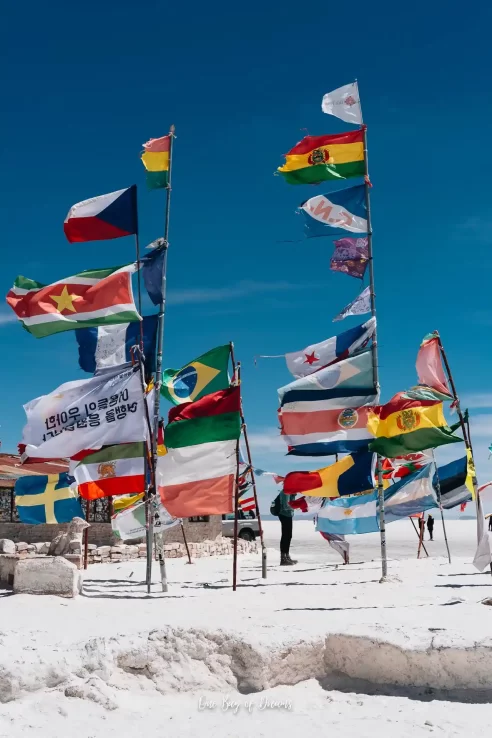
The highlight of the tour is undoubtedly the visit to the salt flats themselves. You’ll have the opportunity to take some amazing photos in the salt flats, playing with the perspective and optical illusions created by the flat and reflective surface.
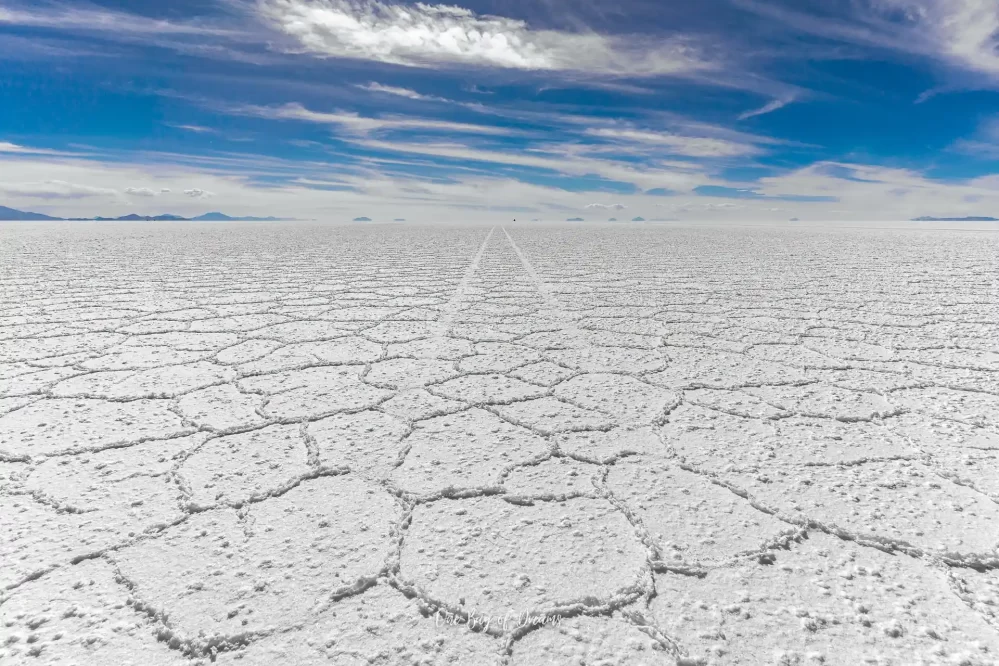
The Isla Incahuasi is another unique landscape you’ll visit, surrounded by the vast expanse of salt flats and covered with giant cacti that can reach up to 10 meters in height. These cacti are for sure an incredible sight.
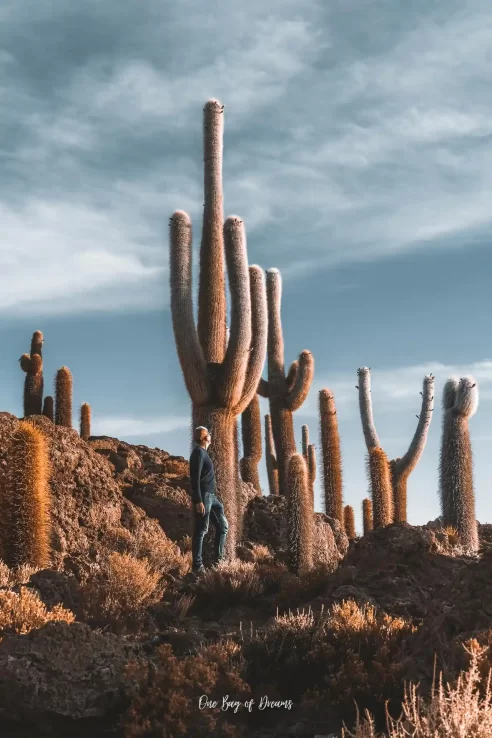
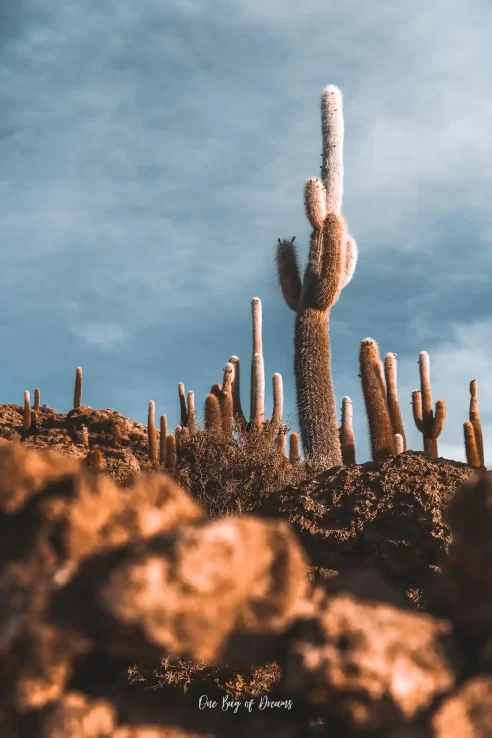
Finally, you’ll arrive at the Salt Hotel by 8 p.m., which is built entirely with salt. The hotel offers a unique experience, as you can sleep on a bed made of salt and enjoy a breathtaking view of the salt flats from your room. The tour concludes with dinner at 9 p.m., where you can enjoy traditional Bolivian cuisine and reflect on the amazing experience of visiting one of the world’s most unique natural wonders.
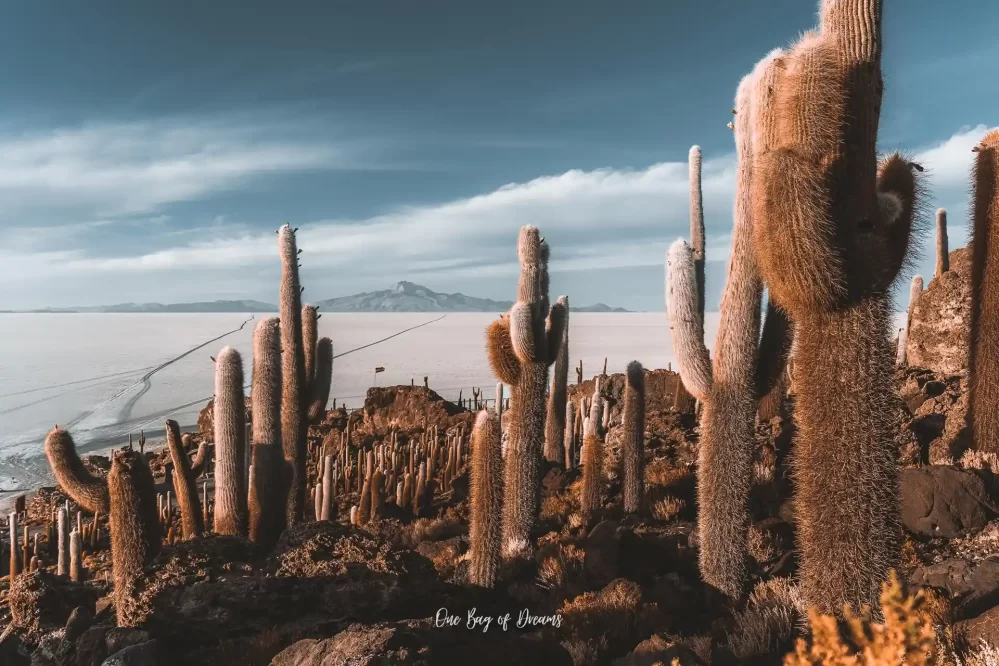
Day 2
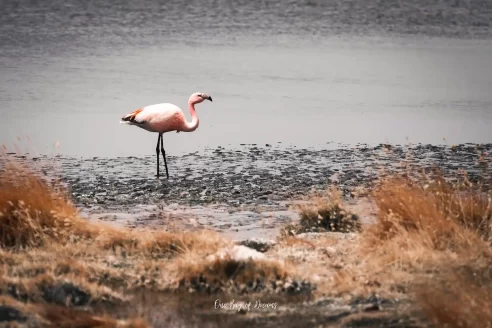
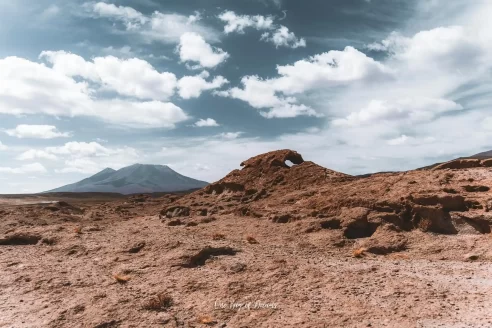
The second day of the tour takes you to breathtaking natural wonders. Starting with breakfast at the Salt Hotel at 7 a.m., the tour continues towards the Mirador Vulcan Ollagüe. This viewpoint offers a stunning panoramic view of the Ollagüe volcano, one of the highest active volcanoes in the world. After this stop, the tour proceeds to a lagoon with flamingos where lunch is served. The lagoon is surrounded by spectacular views of the Andes and is home to three species of flamingos.
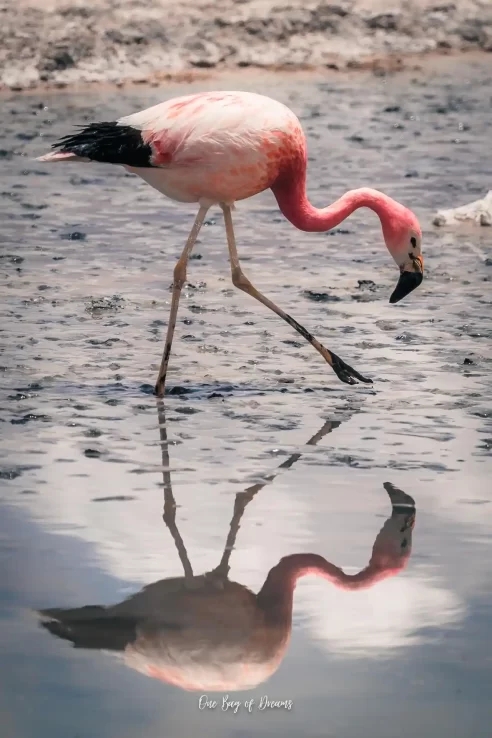
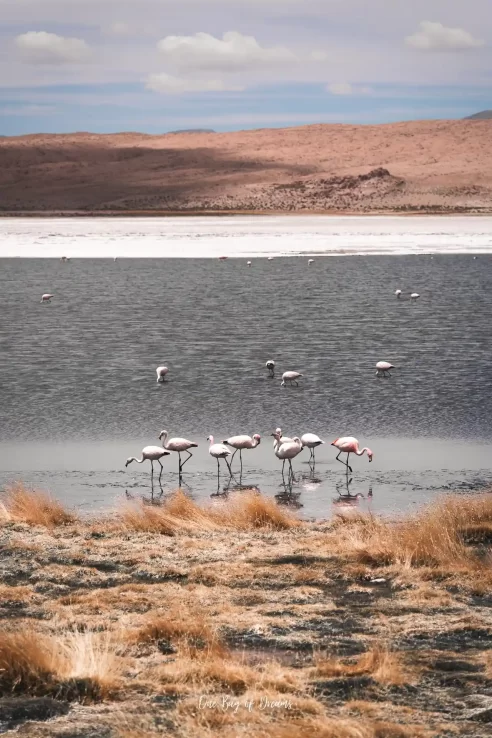
After lunch, the tour heads to the rock tree, a unique rock formation in the middle of the desert. Then, the highlight of the day is the visit to Laguna Colorada, a breathtaking red-coloured lagoon that is home to thousands of flamingos. As the day comes to a close, the tour takes you to Sol de Mañana, a geothermal field with impressive geysers that emit steam and boiling water. After a day full of adventure, dinner is served at the hostel, and the night ends with a relaxing swim in the Termas de Polques hot springs under a blanket of stars.
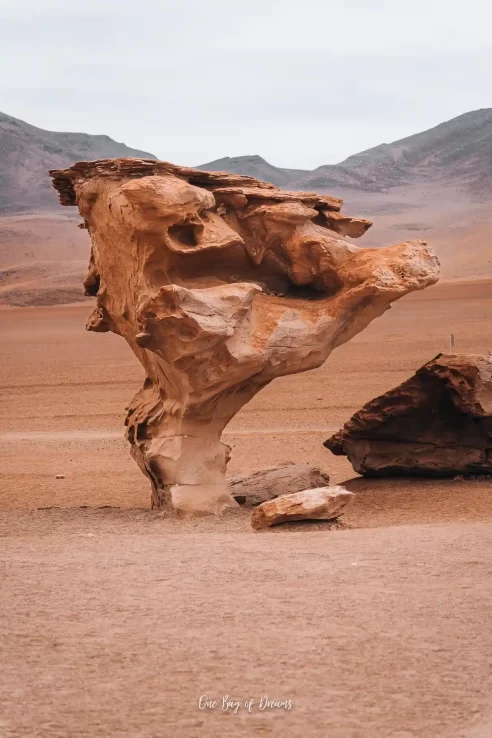

Day 3
The third and last day of the tour begins with an optional swim in the Hotsprings Termas de Polques before breakfast. After breakfast at the hostel, your group will head to the Salvador Dali Desert, which features unique rock formations that look like they came straight out of one of Dali’s paintings. After that, you will visit the stunning Laguna Verde and Laguna Blanca, both of which offer breathtaking views of the surrounding mountains. The unique colours of the lagoons, such as Laguna Colorada and Laguna Verde, are due to the high concentration of minerals and algae present in the water. Laguna Colorada, for instance, has a reddish colour due to the high concentration of iron oxide in the water, while Laguna Verde’s green hue is caused by the high level of magnesium in the water. These lagoons, with their vibrant colours and breathtaking scenery, make for a truly unforgettable experience on the tour.
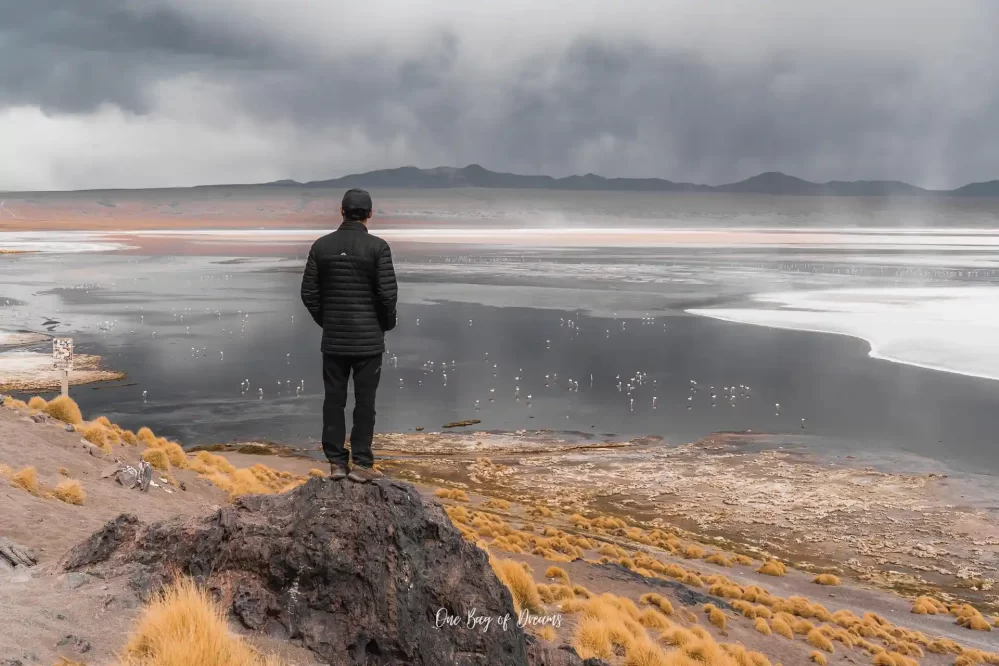
At the border, the driver will drop off those who will continue to travel to San Pedro de Atacama. Make sure that you bring all your necessary documents for the border crossing to Chile. Also take care that you won’t take any food such as apples with you over the border, as it is illegal and you may be fined. From the point where you will be dropped off, another minivan will take you over the border to San Pedro de Atacama.
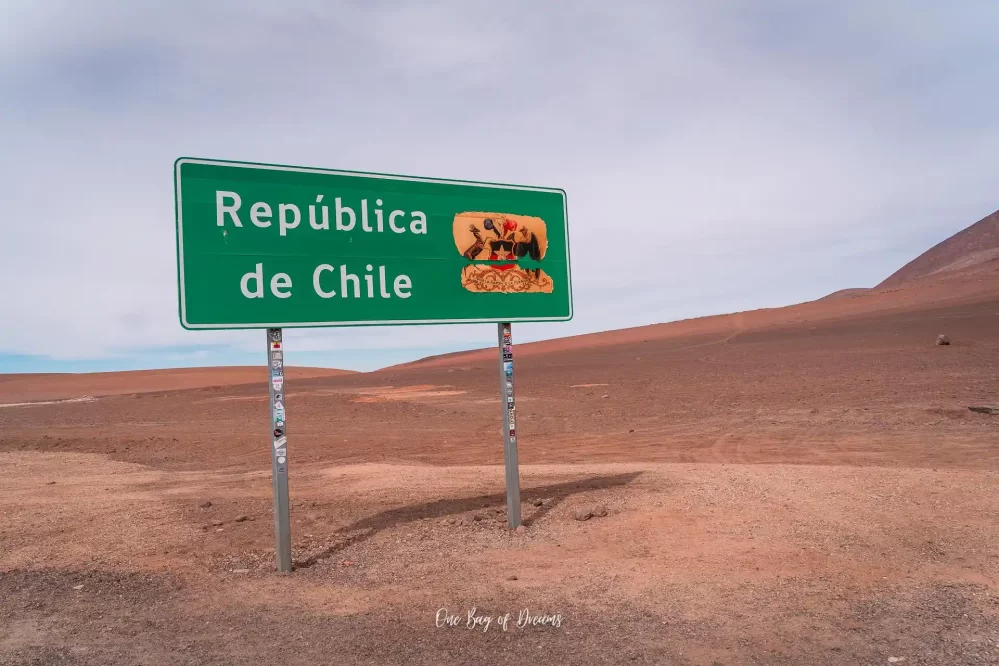
The rest of the group will then make its way back to Uyuni. On the long way there you will stop at around midday to have lunch, which will be prepared by your driver. After lunch, you have the chance to visit Italia Perdida and Laguna Vinto before arriving in Uyuni around 6 p.m. If you wish to travel to Sucre can take the night bus at around 9 p.m.
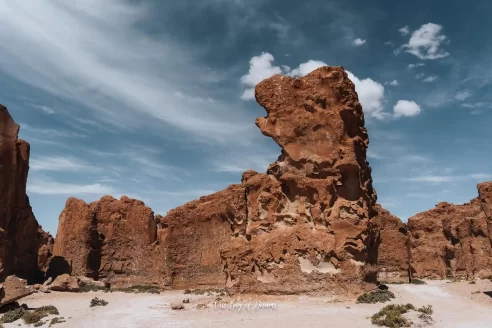
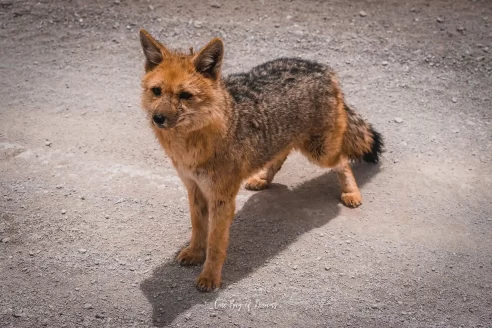
Read More: If you are planning to visit the Sucre in Bolivia, check out the Ultimate Guide of the Top Things to Do in Sucre, Bolivia!
What to Pack for the Salt Flats in Uyuni
When packing for a 3-day trip to the Saltflats of Uyuni, it’s important to keep in mind that it is a desert and the difference between the climate at daytime and at night can be quite drastic. Here’s a list of items that you may want to consider bringing with you:
- Warm clothing: temperatures can drop significantly at night, so bring warm layers such as a fleece jacket, thermal underwear, and a hat and gloves.
- Sun protection: the sun can be intense during the day, so bring sunglasses, sunscreen, and a hat.
- Comfortable walking shoes: for walking around the salt flats and other areas, bring comfortable and sturdy shoes.
- Camera: the Saltflats of Uyuni are a photographer’s paradise, so don’t forget your camera and any extra batteries or memory cards.
- Power bank: There isn’t always electricity available. Therefore make sure to pack your fully charged power bank.
- Water bottle: it’s important to stay hydrated, so bring a reusable water bottle as well as enough water for the 3 days. There will be water available during breakfast, lunch and dinner. However, inbetween you will need your own water to stay hydrated.
- Snacks: bring some snacks to keep you energized throughout the day, such as nuts, granola bars, or fruit.
- Personal toiletries: bring any personal toiletries you may need, such as a toothbrush, toothpaste, shampoo, and soap.
- Cash: bring enough cash for any souvenirs, drinks or snacks you may want to buy along the way.
It’s important to pack light and only bring the essentials since there won’t be much space in the 4×4 vehicle. It’s also recommended to pack everything in a backpack or duffle bag since suitcases can be difficult to carry on some parts of the tour.
Budget to visit the Salt Flats of Uyuni
The budget for a tour to Uyuni can vary depending on the length of the tour and the level of comfort you prefer. The 3-day tour I have chosen came in at around 650 Bolivianos (94 USD). The price included transportation, meals, and accommodation as well as a Spanish-speaking tour guide. The entrance to the Salt Flats of Uyuni costs an extra 150 Bolivianos (22 USD). Furthermore, you will have to pay 30 Bolivianos to visit the Isla Incahuasi. This will cost 30 Bolivianos (4.50 USD). The entrance to the hot springs was 6 Bolivianos (0.9 USD). So in total for the 3-day tour, you will have to calculate a price of roughly around 836 Bolivianos (122 USD).

Top Tip: The tours with an English-speaking travel guide are generally more expensive. Therefore I recommend taking a Spanish-speaking travel guide as they usually speak a bit of English anyway and there are people on the tour that can translate for you.
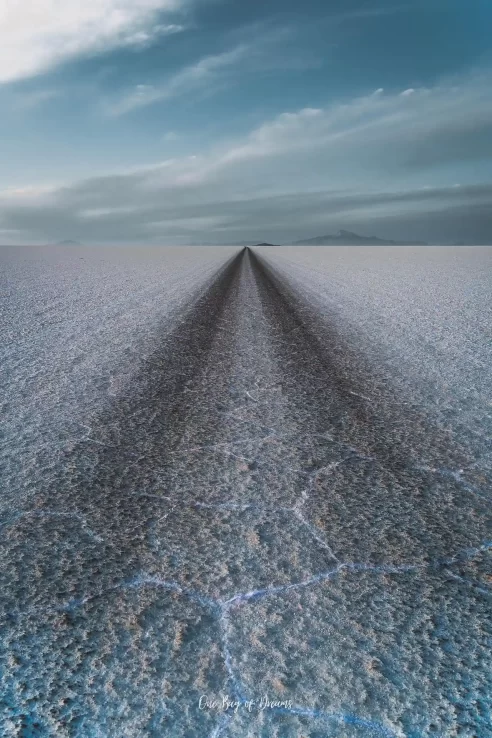
Final Thoughts about the Salar de Uyuni
In conclusion, a tour of the Salt Flats of Uyuni is an experience of a lifetime. The stunning landscapes and unique geological features found in the region are breathtaking and awe-inspiring. The tour options available cater to all budgets and preferences, and the multi-day tours offer a chance to see and explore more of the surrounding areas. Although the weather can be very harsh, the tour guides are experienced and knowledgeable about the area, making sure that you will have a safe and enjoyable trip. It’s important to remember to pack accordingly and bring extra cash for unexpected expenses. Overall, the trip to the Salt Flats of Uyuni is definitely worth it and is sure to leave a lasting impression on anyone who visits.
Pin This Uyuni Salt Flat Travel Guide For Later!
